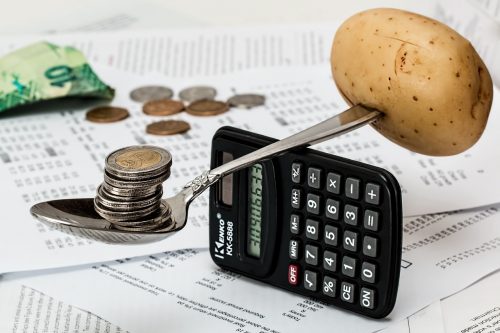
Determining the marginal cost is important for any business that is looking to maximize its profits. In a nutshell, it represents the decrease or increase in the total cost incurred by producing one or more unit of a product, or serving one or more customers. When shown on a graph, marginal cost has a U-shaped curve where costs start high but decreases as production increases, although it spikes up again at some point.
What Is This Marginal Cost?

The issue of marginal cost is closely tied to economies of scale, which refer to the reduced costs per unit due to increased total output of a product (or service). To put this into perspective, imagine that a factory that produces more toys can reduce the production cost per unit because it can take advantage of discounts for bulk purchase of raw materials like plastic, fabric, and paint and make full use of its equipment and labor.
Nevertheless, don’t be quick to assume that increasing your output will always result in lower production cost per item. When you reach a certain point called “diseconomies of scale,” the marginal cost will rise again because you have to buy more equipment, hire more employees, and/or find additional raw materials from other sources (which might sell them at a higher price) because you have already exhausted the local sources.
To better understand marginal cost and how you can maximize your profit by identifying its “sweet spot,” it is also important to learn other related concepts. After all, the total cost of a business is comprised of fixed costs and variable costs.
Fixed Costs

Fixed costs, as the name suggests, are costs that remains constant—it remains the same despite changes in the output level of goods and services. One good example is the rent payment, which remains the same even if your company does not produce a single output for the month.
Variable Costs

Variable cost, conversely, is dependent on the production output levels of goods and services, and thus it is always fluctuating—i.e., decreasing as the output level decreases, and increasing as the output level increases. For example, a company that manufactures power tools will spend more on electricity if it beefs up its production, or less if it will reduce the number of items being produced. A change in fixed cost alone does not affect the marginal cost, which can only change when there is a change in variable cost. Consequently, the marginal cost of production is zero when there are no variable costs, only fixed costs.
Conversely, variable costs such as electricity, raw materials, labor, etc. have a direct effect on the marginal cost of production. For example, the fixed costs for a toy manufacturer are $100, the cost of creating these toys is inconstant, and the total cost of production for 30 items is $1,000. In this scenario, if the cost for producing 31 toys is $1,010, the marginal cost of producing the 31st toy is $10.
The aforementioned example perfectly demonstrates the economies of scale. As opposed to paying $33.33 per item for 30 toys, the company only spends $32.58 for each toy when 31 toys are manufactured.
How Do You Determine Marginal Cost?

To get the marginal cost, divide the change in cost by the change in quantity.
To determine the change in cost, deduct the production cost during the first output from the production cost in the following batch when the yield has increased. Hence, this pertains to the increase or decrease of cost of production during a specified period.
To determine the change in quantity, deduct the number of goods manufactured in the first production run from the number of items made in the subsequent production run.
To reiterate, marginal cost appears like a U-shaped curve on a graph where cost starts high but when it reaches the middle it goes down as production increases, although it increases again at a certain point. Hence, this concept plays a critical role in your production decision, particularly how many items you can produce without compromising your revenue.
The Consequences

In essence, you’ll enjoy strong revenue if it remains higher than the added cost. Conversely, you should halt production expansion if the price change is lower than the marginal cost.
The sweet spot of marginal cost, or more aptly referred to as economies of scale, in which you experience reduced costs per unit incurred when you increase the total output of a product or service, is the key to remain on top of your profitability.
But due to new technologies and management techniques, the economies of scale is no longer an inviolable concept. Read on the list of examples to demonstrate its limitations.
Making Choices

For one, it is now easier and cheaper to outsource functional services such as accounting, marketing and advertising, human resources, information technology, legal, among others. Hence, even small companies today can minimize their production cost without having to compromise the quality of their products and services.
Some technologies and equipment are priced more competitively, which in turn allows smaller manufacturers to compete with their larger counterparts, or sometimes even engage in price war and other tactics used in cutthroat competition.
The globalization of trades and improved logistics have contributed to lower costs, which smaller players could take advantage of.
Flexible technologies, modern techniques, and state-of-the-art software allow inventors and designers to turn their ideas into realities and above all market their products more cheaply and quickly. This collaboration of technologies has also paved way for the growing number of micro-factories situated locally or abroad that are reducing not just the production cost but also the carbon footprint and supply chains.
Why Is It Important to Know the Marginal Cost?

To make your business sustainable in the long run, it is a sacrosanct rule to maintain the marginal benefit, which is the extra profit you reap from cranking up your production. Of course, there is a point when you have to halt production lest you end up increasing your cost so that it no longer justifies producing more goods and services.
Take note that the marginal costs are also influenced by your customers, particularly their willingness to purchase your goods or services. For example, if a local bakeshop sells more buns than its patrons want in a day, the marginal cost of excess goods does not justify the increase in output.
Marginal costs vary from time to time. For instance, a recently introduced makeup product that has low sales in the first two years has high marginal costs per item in the said period, which may change if it builds traction on social media when celebrity makeup artists rave about the product.
From the Perspective of Customers

It may come as a surprise, but the rules of marginal cost, particularly its benefit, also applies to customers. For example, maintenance drugs that are taken regularly to control a chronic medical condition (type 1 diabetes, high blood pressure, seizure disorder, etc.) will maintain their marginal benefit even though a patient has already bought two, three, or more bottles.
However, this rule does not apply in some situations; for example, a restaurant customer who has eaten two slices of pizza may think that a third slice is no longer worth it. In this situation, the marginal benefit, i.e., the pleasure he derives from eating more pizza, has significantly declined.
From a customer’s perspective, lowering the price of a product may convince him to spend more money even though the marginal benefits tend to diminish with an increasing number of purchase (the aforementioned restaurant customer is one perfect example). The same concept also applies to bulk orders that often come at a steep discount, which is an attempt to cajole people to buy more than what they actually need.
Marginal Cost Analysis

Marginal cost doesn’t just concern itself with how much goods and services you must produce without compromising your profitability. This concept also applies to other aspects such as labor expansion. As a prudent business owner, you must weigh the opportunity cost and the marginal benefit of each added worker.
The purchase of new equipment in an attempt to crank up your production should also involve weighing in the marginal benefit and the increased marginal cost. Of course, the additional cost should always justify the marginal benefit, otherwise known as the extra profit.
Conclusion
The concept of marginal cost is a useful analysis tool that can help you make sound business decisions, particularly in terms of beefing up your production and revenue, hiring additional employees, and investing in new equipment.
With new technologies and techniques, in addition to global trades and better logistics, it has now become easier to cut the marginal cost, which inevitably boosts the marginal benefits and justifies cranking up the volume of output.
You should also take advantage of outsourcing and off-shoring, activities in which you get functional services such as human resources, legal, marketing, etc. from a third party. By reducing the cost of labor, you also decrease your marginal cost.